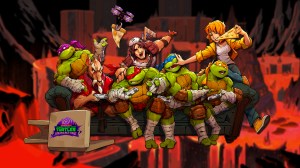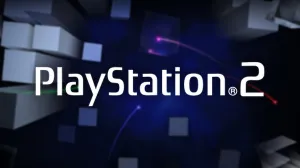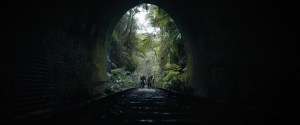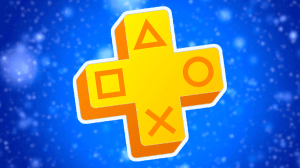Ninjas are, surprisingly, back. While there have been and always will be games every year filled with the iconic masked warriors, 2025 was particularly flooded with shinobi. This was an effort led by the unexpected but welcome resurgence of Ninja Gaiden — it kicked off and capped off the trend for the year — but there were coincidentally plenty of other ninja-related games that came out during the year. This includes games like Ghost of Yotei and Teenage Mutant Ninja Turtles: Splintered Fate, the latter of which jumped to a handful of new platforms in 2025.
Videos by ComicBook.com
Here are how 2025’s ninja games from Ninja Gaiden 4 to Assassin’s Creed Shadows stack up against one another.
8) Assassin’s Creed Shadows
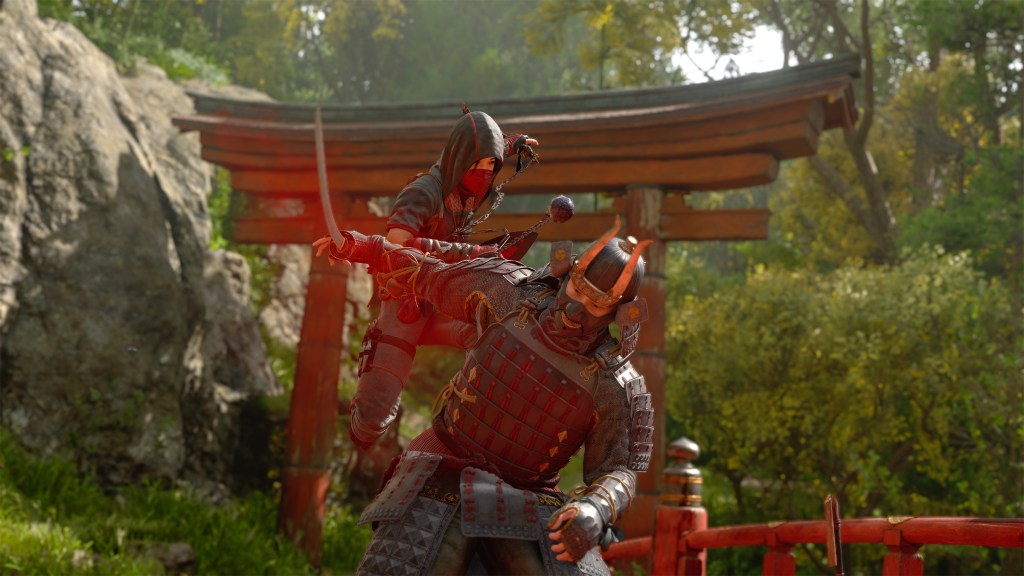
An Assassin’s Creed game in Japan should have been a slam dunk. While the series has always been more interesting when delving into lesser-explored settings like Baghdad during the Islamic Golden Age and 18th-century America, Feudal Japan naturally works with the fantasy of being an stealthy Assassin. But even with that symbiotic marriage of ninja and Assassin, Assassin’s Creed Shadows is one of the worst and most boring entries in this uneven series.
Shadows fails in many different ways, too. Its rendition of Japan is an absolute nightmare to navigate because of its overly dense forests that discourage exploration and force players to stick to boring roads. Its dead world is mostly stuffed with unengaging, cut-and-paste activities and assassination missions that are just more substance-free grist for the mill. Swordplay is mashy and its spongey enemies make both characters feel weak; an inevitable byproduct of an overreliance on loot and RPG mechanics. Protagonists Naoe and Yasuke are given nothing to work with in its bland story that says nothing and cuts off abruptly enough to almost feel like a glitch.
Shadows is a victim of the mindless open-world drivel and design-by-committee feel that has plagued Ubisoft for some time. The series needed to come back with something more ambitious and honed after the failures of Valhalla and Mirage, and this, to its great detriment, absolutely does not fit either of those descriptors.
7) Teenage Mutant Ninja Turtles: Tactical Takedown

Teenage Mutant Ninja Turtles games are usually in the action or brawler genre, so it’s strange that Teenage Mutant Ninja Turtles: Tactical Takedown is a turn-based strategy game. But this shift mostly works in its favor.
Pieces kinetically slam together on the grid to sell the impact its static characters can’t directly convey, and the level scrolls forward to force players to play aggressively and not turtle up (no pun intended). While the group works independently, all four have unique attacks that players have to assess before every move, as their different properties and energy costs add the depth a game like this requires. It does get a little repetitive, though, since it shows most of its hand rather quickly and there are only so many times players can boot a Foot Clan ninja off into the abyss before it wears out some of its welcome.
Tactical Takedown also takes the reptilian crew into new narrative spaces with its story that kills off Splinter and Shredder and has the Turtles trying to figure out their role in life. It’s a unique premise with some heart that suffers a bit from its lack of voice acting that inhibits how clearly their personalities can shine through. It’s a microcosm that explains the whole experience: charming and interesting but held back by its small budget.
6) Ninja Gaiden 2 Black
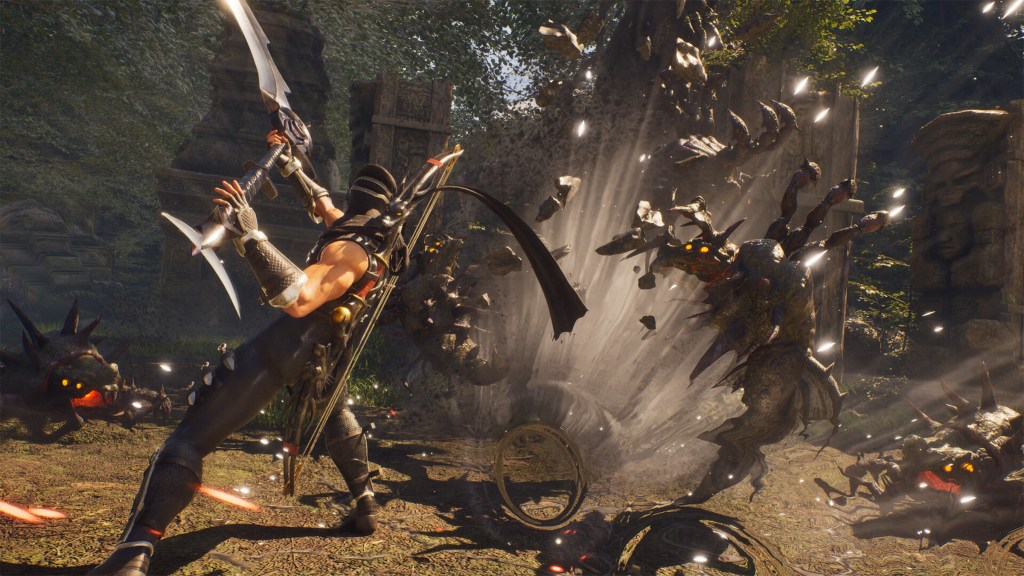
Ninja Gaiden 2 Black should be the ultimate version of Ninja Gaiden 2. Ninja Gaiden 2, at its core, was an excellent entry in the series because of how well it built on the original. Blood-soaked battles gave the impression of chaotic carnage but were instead often ballets of destruction that required fine control and fast reflexes. Sigma 2, the PS3 re-release that came out a year later, reconfigured a lot of aspects like enemy health, horde density, and the level of blood and added more playable characters. It was better in some aspects than the vanilla version and worse in others, which opened the door for Ninja Gaiden 2 Black to become the ultimate way to experience the second modern Ninja Gaiden game.
In some respects, Black does fuse the best parts of these two iterations. It has the gore and upgrade system of the original, as well as the new characters and heavy sword from Sigma 2. However, it’s not the definitive version of Ninja Gaiden 2 because it still favors Sigma 2’s inferior qualities (like its inflated enemy health and decreased wave sizes) and doesn’t have all of the costumes or the survival missions. So even though it is still a great version of a fantastic game, it isn’t as complete or expansive as it should be and doesn’t quite deserve its subtitle.
5) Teenage Mutant Ninja Turtles: Splintered Fate
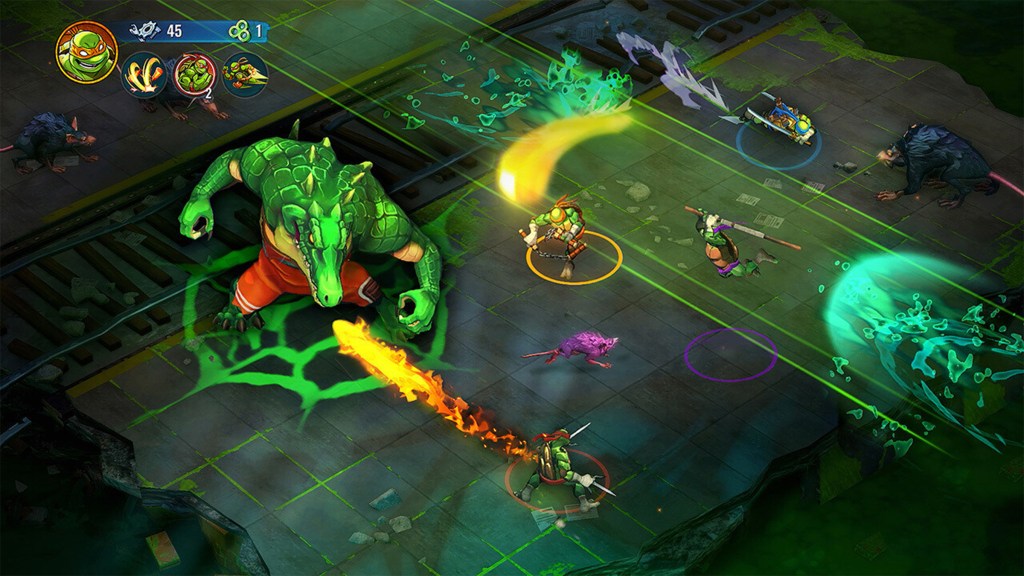
Teenage Mutant Ninja Turtles: Splintered Fate does not hide how much it is copying Hades since just about every part of it can be traced back to Supergiant Games’ classic roguelite. Splintered Fate is an isometric brawler with a focus on stacking upgrades and a story that progresses upon a successful run. But it’s a valuable blueprint to ape, and Splintered Fate doesn’t feel like a hollow imitator. It contains an impressive amount of upgrades that give players a ton of control over their build, be it doubling down on ninja powers or focusing on caking toxic ooze onto each enemy. The moment-to-moment controls are also shockingly smooth, so these well-constructed upgrades aren’t smothered by unresponsive movement or laggy attacks.
This solid foundation makes runs rewarding for some time, but it does slip up in key ways that keep it from true greatness. It relies way too heavily on RPG mechanics, meaning runs can come to a premature end solely because it is simply not possible to do enough damage to survive. Encounter variety is also lacking because the game doesn’t throw enough curveballs at players (which is a problem during bosses, as well). While there are some funny lines and solid performances, the story is not interesting and doesn’t even have a real ending; it feels as though a true finale will be sold as DLC or get fleshed out in a sequel. Because of these stumbles, Splintered Fate can’t compete with Hades’ nuanced writing, impeccable narrative, finely honed gameplay, impressive variety, and visual splendor. But it is still much better than a licensed, mobile-first roguelite needs to be.
4) Shinobi: Art of Vengeance
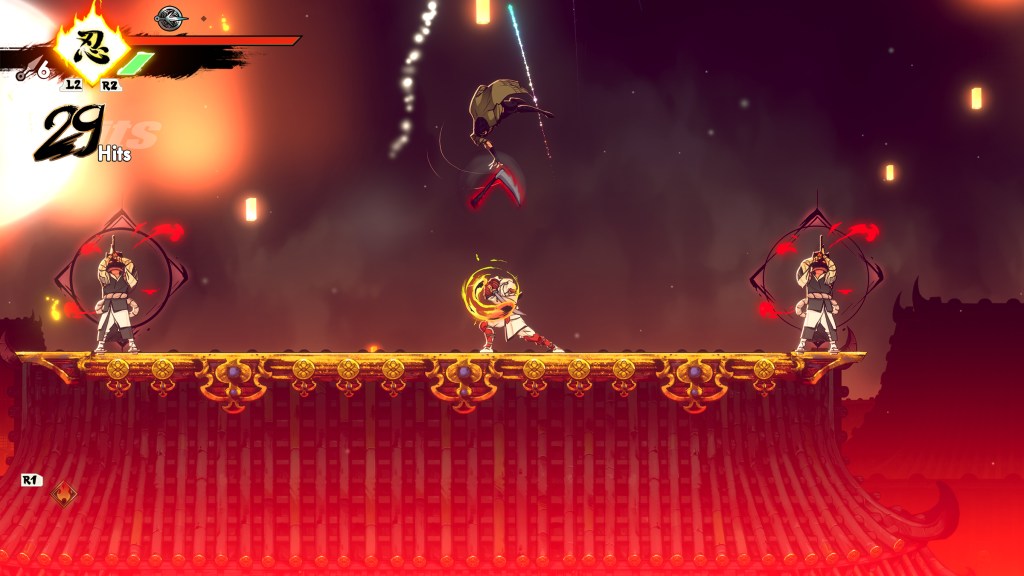
Shinobi has been dead for 14 years, but Shinobi: Art of Vengeance demonstrates how a studio can resurrect a franchise. Part of that winning formula is literally in the title; its art is spectacular. Vibrant colors paint each environment and vista, and every character moves with the fluidity befitting of a game all about ninjas. Massive special attacks are also quite a flex from developer Lizardcube since they drench the screen in an array of effects that are gorgeous every single time. Art of Vengeance is one of those few games where the beauty of the striking key art isn’t lost during gameplay.
The smoothness of the visual presentation mostly carries over to its mechanics. Racking up high combos demonstrates how well-crafted its juggle-heavy melee mechanics are since so many of protagonist Joe Musashi’s attacks flow seamlessly to and from one another. Combat gets a little finicky, though, since some actions have a surprisingly large amount of recovery frames or don’t trigger as quickly as they should. More than a few abilities also share the same handful of buttons. Slashing through a horde of goons with a 147-hit combo is satisfying, yet Art of Vengeance’s busy controls add some unnecessary turbulence.
Even with some stumbles, Art of Vengeance is a well-crafted first step of a series revival. With the right tweaks, it could potentially match the high bar set by its art direction.
3) Ninja Gaiden 4

Ninja Gaiden 3 was a tragic disappointment and wasn’t helped much by its enhanced Razor’s Edge version. It only took around 13 years, but Ninja Gaiden 4 has finally washed away the terrible aftertaste of that trilogy-ender.
This PlatinumGames-developed follow-up captures a decent amount of what made those prior games special while adding its own flair. The action is blazing fast and prioritizes hacking off limbs and making split-second decisions. There’s a bigger focus on parries and last-second, Bayonetta-like dodges, both of which imbue fights with a deeper array of defensive options.
It opts for Sigma 2’s approach of having tankier enemies instead of an array of weaker yet more aggressive ones — and this choice can make battles drag on for too long — but dashing from victim to victim and pulling off grand combos evokes the same type of dopamine rush that fueled Team Ninja’s first two entries. Ninja Gaiden 4 is held back by its inflated length, array of stiff vehicle or flying segments, inability to innovate, and aforementioned spongey enemies, but it has enough Ninja Gaiden DNA to put the series back on the right track.
2) Ninja Gaiden: Ragebound

Ninja Gaiden began as a 2D franchise, so it’s poetic its best entry since 2008 is also a 2D game. Ninja Gaiden: Ragebound is built on the fluidity a ninja game should have. Levels are constructed in a way to get players to move through them in one consistent motion, something that’s beautifully highlighted in its Hypercharge system. Glowing enemies imbue the bickering protagonists Kenji and Kumori with a special one-hit kill when slain and mastering when to unleash this ability in order to move past large foes unabated gives Ragebound a satisfying rhythm and high skill ceiling.
Missing a cue or needing to stop and slash a demon isn’t fatal, but the way it feels to smoothly traverse a gauntlet without stopping is gratifying enough to be its own reward. By making this feeling so enticing, Ragebound encourages players to adapt and improve in order to realize that ninja fantasy. Bosses can’t be dispatched as quickly but are similarly fantastic because of how they force players to learn patterns in order to overcome each challenge. Except for frustrating contact damage, it’s all brilliantly designed and also supported by The Game Kitchen’s signature pixel art that is among the best in the industry.
A callback to old Ninja Gaiden games could have been blisteringly hard in order to adhere to the brutal level of difficulty the older pre-Team Ninja games were notorious for. But Ragebound doesn’t settle for blindly following nostalgia. Instead, The Game Kitchen made a game that nods to the arduousness of the past installments yet realizes that challenge in a more fair and honest way, resulting in a title that with the right mix of new and old.
1) Ghost of Yotei
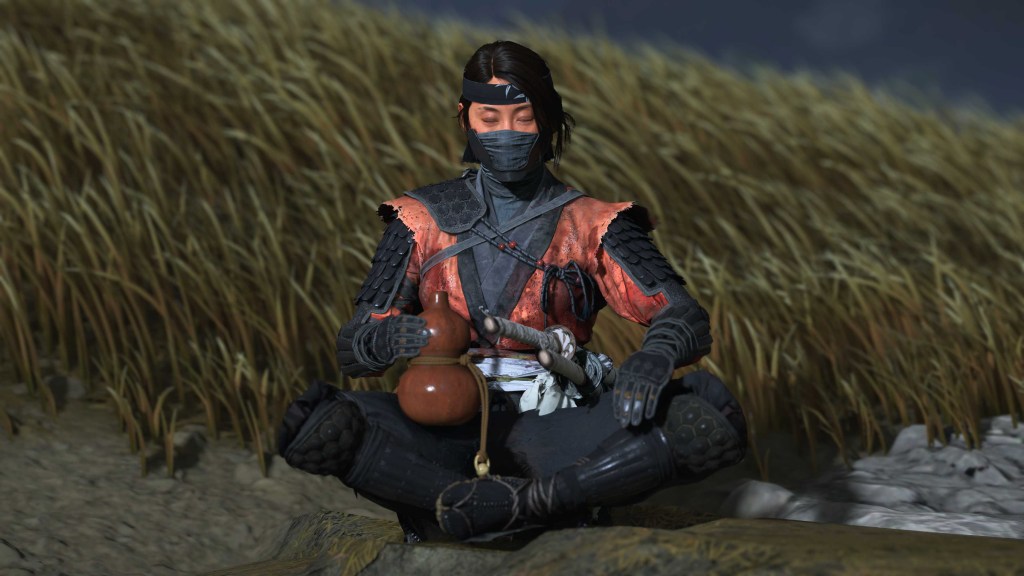
On its surface, Ghost of Yotei just looks like more Ghost of Tsushima. Part of that prescription is accurate since Yotei has a similar look and is also an open-world action game set in Japan. But that assumption misses all the small but notable ways Yotei improves upon the foundation Tsushima built.
Having access to more weapons, tools, and abilities makes swordplay more varied and complements the smooth controls that undergird the entire system. UI improvements remove the tedium that came with picking a killer armor setup — and there are plenty of amazing sets to track down. More detailed facial animation (in both the English and Japanese tracks) gives cutscenes an additional scoop of gravitas and helps better sell the drama inherent to its revenge-laden story. A faster horse and lanes that dial up the speed even further makes it easier to get around the map. The investigation sections are fewer and further between and are significantly less annoying thanks to more noticeable prompts. Even sheathing a weapon is smoother since it doesn’t stop Atsu in her tracks like Jin.
These improvements range in scale but the way Sucker Punch Productions changed how it crafted Yotei’s open world is this sequel’s biggest accomplishment. Even though it has its share of repeated activity types (although they are far less repetitive and often have small twists to them), exploration is a lot more natural this time around. Seemingly everything important has an eye-catching visual design that guides the player toward it. This may be a charred building, a frustrated fisherman, or a bar covered in Oni masks. It uses the player’s curiosity to guide them around and rewards them for it, often resulting in a surprise side mission or small story tidbit. These curated moments are littered across the map and make the entire place feel more alive than most other open-world games. This unpredictability sits in stark contrast to Assassin’s Creed Shadows and its banal, lifeless rendition of Japan.
With a better realized open world, a wonderfully saturated art style that’s among the prettiest games on the PS5, and a litany of small enhancements, Ghost of Yotei is a stunning experience that has the right amount of polish in all the right places. It’s Sucker Punch’s best game, one of the top PS5 exclusives, and the most remarkable ninja-related game of 2025.
What do you think? Leave a comment below and join the conversation now in the ComicBook Forum!

